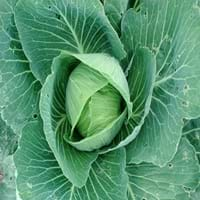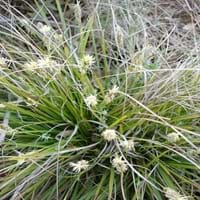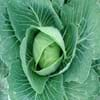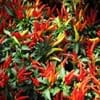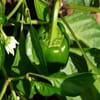Life Span
Annual
Perennial
Type
Vegetable
Sedge or Rush
Types
Chinese Cabbage, Napa Cabbage
Narrow sedge
Habitat
Farms, Fields, Subtropical climates
Boggy areas, ditches, marshes, riparian zones, stream banks, Tropical regions, Wet forest
USDA Hardiness Zone
4-7
6-9
Sunset Zone
A1, A2, A3, H1, H2, 1a, 1b, 2a, 2b, 3a, 3b, 4, 5, 6, 7, 8, 9, 10, 11, 12, 13, 14, 15, 16, 17, 18, 19, 20, 21, 22, 23, 24
3a, 3b, 4, 5, 6, 7, 8, 9, 14, 15, 16, 17, 18, 19, 20, 21, 22, 23, 24
Habit
Clump-Forming
Arching/Fountain-shaped
Flower Color
Yellow
Brown
Flower Color Modifier
Bicolor
Bicolor
Fruit Color
Not Available
Not Available
Leaf Color in Spring
Light Green
Dark Green, Light Yellow
Leaf Color in Summer
Not Available
Dark Green, Light Yellow
Leaf Color in Fall
Not Available
Dark Green, Light Yellow
Leaf Color in Winter
Not Available
Dark Green, Light Yellow
Leaf Shape
Oblong Circular Round
Long Linear
Plant Season
Spring, Summer, Fall, Winter
Spring, Summer, Fall, Winter
Sunlight
Full Sun, Partial Sun
Partial Sun, Partial shade
Type of Soil
Loam, Sand
Clay, Loam, Sand
The pH of Soil
Neutral
Acidic, Neutral, Alkaline
Soil Drainage
Well drained
Well drained
Bloom Time
Spring, Summer
Spring
Tolerances
Drought
Drought, Heat Tolerance
Where to Plant?
Container, Ground
Container, Ground, Pot
How to Plant?
From bulbs, Seedlings
Seedlings
Plant Maintenance
Low
Low
Watering Requirements
Keep ground moist, Keep the ground moist but not water-logged, Requires regular watering
Average Water Needs, Do Not over Water, Never Over-water, Prefer drip-irrigation instead of Over-head watering, Requires regular watering
In Summer
Lots of watering
Ample Water
In Spring
Moderate
Ample Water
In Winter
Average Water
Average Water
Soil pH
Neutral
Acidic, Neutral, Alkaline
Soil Type
Loam, Sand
Clay, Loam, Sand
Soil Drainage Capacity
Well drained
Well drained
Sun Exposure
Full Sun, Partial Sun
Partial Sun, Partial shade
Pruning
Remove damaged leaves, Remove dead leaves
Remove damaged leaves, Remove dead leaves
Fertilizers
Nitrogen, Phosphate, Well-rotted manure
organic fertlizers, very little fertilizers at a time, Water soluble fertilizers
Pests and Diseases
Alternaria Leaf Spot, Anthracnose, Bacterial soft rot, Blackleg, Damping off, Damping-off, Downy mildew, Flea beetle, Flea Beetles, Fungal Diseases, fungus, Red blotch, Watery soft rot
Aphids, Mealybugs, Red blotch, Scale, Slugs
Plant Tolerance
Drought, Heat Tolerance
Dry Conditions, Heat Tolerance
Flowers
Showy
Insignificant
Flower Petal Number
Single
Single
Fragrant Bark/Stem
Yes
No
Foliage Texture
Coarse
Fine
Foliage Sheen
Not Available
Glossy
Attracts
Beetles, Flies, Insects
Insects, Mealybugs
Allergy
Throat itching
Asthma
Aesthetic Uses
Not Used For Aesthetic Purpose
Beautification, Borders, Cottage Garden, Landscape Designing, Showy Purposes
Beauty Benefits
Not Available
No Beauty Benefits
Environmental Uses
Air purification, Food for animals, Food for insects
Air purification, Food for insects, Shelter for wildlife, Versatility, Wildlife
Medicinal Uses
Anti-oxidant, Antioxidants, Digestion problems, Low calories, Nutrients, Skin Disorders
Diuretic
Part of Plant Used
Fruits, Leaves
Leaves
Other Uses
Food for animals, Used As Food, Used for its medicinal properties, Used as a spice, Used in salads
Decoration Purposes, Showy Purposes, Used as Ornamental plant
Used As Indoor Plant
No
Yes
Used As Outdoor Plant
Yes
Yes
Garden Design
Container, Edible, Herb / Vegetable
Container, Edging, Foundation, Groundcover, Mixed Border
Botanical Name
BRASSICA rapa( Pekinensis Group)
CAREX oshimensis 'Supergold'
Common Name
Celery Cabbage, Napa Cabbage
Sedge
In Hindi
अजवाइन गोभी
evergold Sedge
In German
Sellerie Kohl
Evergold Segge
In French
céleri chou
Evergold carex
In Spanish
apio col
Evergold juncia
In Greek
σέλινο Λάχανο
evergold σπαθόχορτο
In Portuguese
aipo couve
Evergold Sedge
In Polish
seler Kapusta
Evergold turzyca
In Latin
Brassica apium
evergold Sedge
Phylum
Magnoliophyta
Tracheophyta
Class
Magnoliopsida
Liliopsida
Family
Brassicaceae
Cyperaceae
Clade
Angiosperms
Angiosperms, Commelinids, Monocots
Tribe
Brassiceae
Cariceae
Subfamily
Not Applicable
Cyperoideae
Number of Species
Not Available
Importance of Celery Cabbage and Evergold Sedge
Want to have the most appropriate plant for your garden? You might want to know the importance of Celery Cabbage and Evergold Sedge. Basically, these two plants vary in many aspects. Compare Celery Cabbage and Evergold Sedge as they differ in many characteristics such as their life, care, benefits, facts, etc. Every gardener must at least have the slightest clue about the plants he wants to plant in his garden. Compare their benefits, which differ in many ways like facts and uses. The medicinal use of Celery Cabbage is Anti-oxidant, Antioxidants, Digestion problems, Low calories, Nutrients and Skin Disorders whereas of Evergold Sedge is Diuretic. Celery Cabbage has beauty benefits as follows: Not Available while Evergold Sedge has beauty benefits as follows: Not Available.
Compare Facts of Celery Cabbage vs Evergold Sedge
How to choose the best garden plant for your garden depending upon its facts? Here garden plant comparison will help you to solve this query. Compare the facts of Celery Cabbage vs Evergold Sedge and know which one to choose. As garden plants have benefits and other uses, allergy is also a major drawback of plants for some people. Allergic reactions of Celery Cabbage are Throat itching whereas of Evergold Sedge have Asthma respectively. Having a fruit bearing plant in your garden can be a plus point of your garden. Celery Cabbage has no showy fruits and Evergold Sedge has no showy fruits. Also Celery Cabbage is not flowering and Evergold Sedge is not flowering . You can compare Celery Cabbage and Evergold Sedge facts and facts of other plants too.
